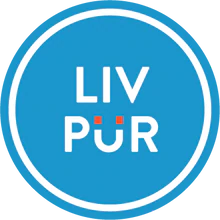
Osteoporosis
(Bone Density) Screening
Osteoporosis screening (often referred to as a bone density test) is conducted by using a specialized ultrasound to measure the density of the shinbone, indicating if bone density is lower than normal. This ultrasound is painless and non-invasive. Bones can become less dense over time when new bone is created at a slower pace than bone is lost. For this reason, it is important for both men and women to get a bone density test. Osteoporosis is serious, and causes over 2 million broken bones every year
Osteoporosis screening (often referred to as a bone density test) is conducted by using a specialized ultrasound to measure the density of the shinbone, indicating if bone density is lower than normal. This ultrasound is painless and non-invasive. Bones can become less dense over time when new bone is created at a slower pace than bone is lost. For this reason, it is important for both men and women to get a bone density test. Osteoporosis is serious, and causes over 2 million broken bones every year.
Osteoporosis Risk Screening Details
Osteoporosis risk assessment (bone density test) is conducted using pulse echo ultrasound on the tibia (shin bone), which is prone to fracture with osteoporosis. The bone screening is painless and non-invasive. The ultrasound utilized is state of the art, and indicates risk for further bone density diminishment. Your results letter, which will be mailed within 21 days of your screening, will indicate your risk of further bone diminishment in one of three categories: low probability, additional investigation needed, or high probability. If your screening results are in either the additional investigation needed or high probability categories, you should discuss your results with your physician. Your physician may or may not determine that further testing or treatment is necessary.
Warning Signs of Osteoporosis
Osteoporosis is silent in its early stages; a broken bone is sometimes the first indication that a person has osteoporosis. There are changes in the body that can indicate osteoporosis is developing, and should be brought to your doctor’s attention:
- Bone fractures after age 50
- Change in posture, becoming more hunched forward
- Sudden back pain
- Loss of height
Additional risk factors include:
- Being a post-menopausal woman
- Having a small, slight body frame
- A family history of osteoporosis
- Being of caucasian, Asian, or Latino heritage
- A diet low in calcium and vitamin D (you can get a simple vitamin D test; click here for details)
- Inactivity—exercise strengthens bones
- Smoking, either past or present
- Consuming large amounts of alcohol
Certain conditions and treatments can put you at higher risk of developing osteoporosis, so people who have any of the conditions on this list should consider getting an osteoporosis screening:
- Endocrine conditions such as diabetes, hyperthyroidism, or hypothyroidism
- Autoimmune disorders such as rheumatoid arthritis
- Digestive conditions like Celiac disease
- Weight loss surgery
- Hematologic or blood disorders such as lymphoma or leukemia
Risk Factors for Osteoporosis
- Postmenopausal women
- Race (Caucasians, Asians, and Hispanics are at greater risk)
- People with small, thin body frames
- Diet low in calcium and vitamin D (vitamin d tests are available with a simple finger-stick blood sample)
- Smoking, past or present
- Physical inactivity
- Heavy alcohol consumption
Warning Signs of Osteoporosis
Osteoporosis is silent in its early stages; a broken bone is sometimes the first indication that a person has osteoporosis. There are changes in the body that can indicate osteoporosis is developing, and should be brought to your doctor’s attention:
- Bone fractures after age 50
- Change in posture; becoming more hunched forward
- Sudden back pain
- Loss of height
Additional risk factors include:
- Being a post-menopausal woman
- Having a small, slight body frame
- A family history of osteoporosis
- Being of caucasian, Asian, or Latino heritage
- A diet low in calcium and vitamin D (you can get a simple vitamin D test; click here for details)
- Inactivity—exercise strengthens bones
- Smoking, either past or present
- Consuming large amounts of alcohol
Certain conditions and treatments can put you at higher risk of developing osteoporosis, so people who have any of the conditions on this list should consider getting an osteoporosis screening:
- Endocrine conditions such as diabetes, hyperthyroidism, or hypothyroidism
- Autoimmune disorders such as rheumatoid arthritis
- Digestive conditions like Celiac disease
- Weight loss surgery
- Hematologic or blood disorders such as lymphoma or leukemia
We're an affiliate. We hope you love the products we recommend! Just so you know, we may collect a share of sales or other compensation from the links on this page with no additional cost to you. Thank you if you use our links, we really appreciate it! Read more











